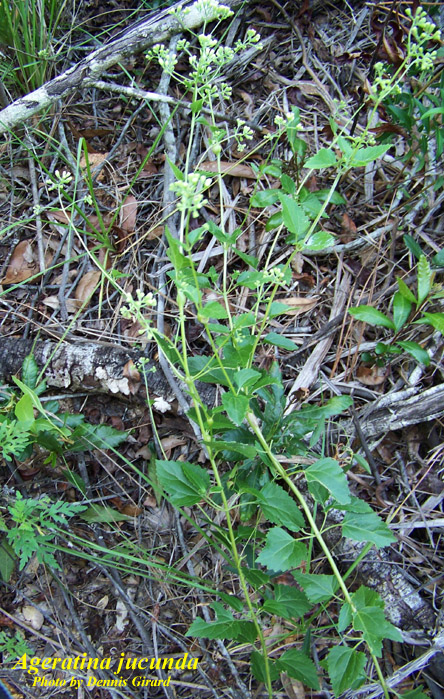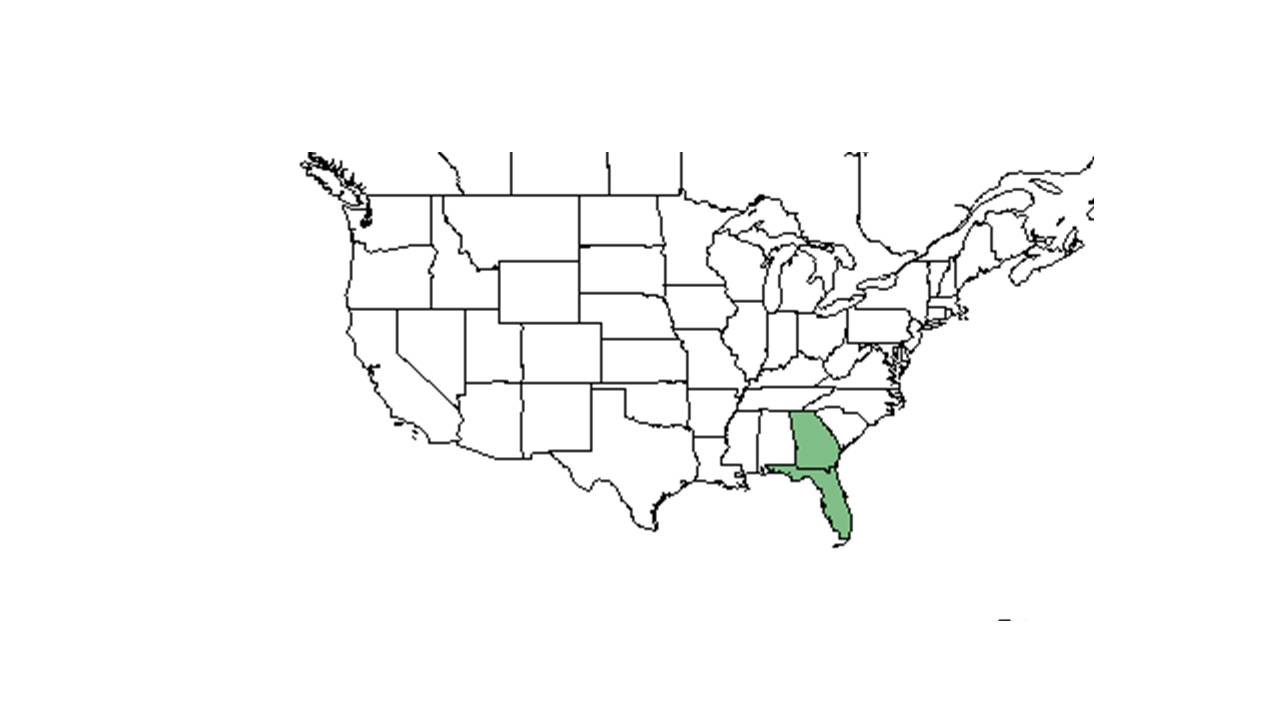Difference between revisions of "Ageratina jucunda"
Krobertson (talk | contribs) |
Krobertson (talk | contribs) |
||
| Line 42: | Line 42: | ||
===Fire ecology===<!--Fire tolerance, fire dependence, adaptive fire responses--> | ===Fire ecology===<!--Fire tolerance, fire dependence, adaptive fire responses--> | ||
| − | ''A. jucunda'' is an associate species of longleaf pine and wiregrass communities that are dependent on periodic fires to maintain the integrity and productivity. Fire suppression can cause ideal habitat loss and therefore a loss of populations of ''A. jucunda''<ref name="Natureserve"/> | + | ''A. jucunda'' is an associate species of longleaf pine and wiregrass communities that are dependent on periodic fires to maintain the integrity and productivity. Fire suppression can cause ideal habitat loss and therefore a loss of populations of ''A. jucunda.''<ref name="Natureserve"/> |
===Pollination=== | ===Pollination=== | ||
Revision as of 08:05, 10 August 2016
| Ageratina jucunda | |
|---|---|

| |
| Photo by Dennis Girard, Atlas of Florida Vascular Plants | |
| Scientific classification | |
| Kingdom: | Plantae |
| Division: | Magnoliophyta - Flowering plants |
| Class: | Magnoliopsida - Dicotyledons |
| Order: | Asterales |
| Family: | Asteraceae ⁄ Compositae |
| Genus: | Ageratina |
| Species: | A. jucunda |
| Binomial name | |
| Ageratina jucunda (Greene) Clewell & Woot. | |

| |
| Natural range of Ageratina jucunda from USDA NRCS Plants Database. | |
Common names: Hammock snakeroot; Small leaf Thoroughwort
Contents
Taxomomic notes
Synonym: Eupatorium jucundum Greene
Description
A description of Ageratina jucunda is provided in The Flora of North America. A. jucunda is a perennial. It is common in all of Florida; flowers from fall to winter.[1]
Distribution
Ageratina jucunda is endemic to the southeastern United States, only known to occur in Florida and a few counties in Georgia. [2]
Ecology
Habitat
This species is found in a wide variety of habitat types including longleaf pine-saw palmetto, dunes, rocky environments, old fields, ecotone from scrub oak sand ridge to shrub bog, stream banks, dry flatwoods,[3] pine scrubs, and longleaf pine-turkey oak sand ridges. It can also occur along roadsides and in abandoned fields,[2] phosphate quarries in hardwoods, alongside paved roads, rocky plantation pastures, and edges of field tracks.[4] Soils include drying loamy sand with sandy, damp, and rich humus soils. This species thrives in environments with moderate shade to high light conditions.
Associated species incldues Solidago stricta, Sabal palmetto, Serenoa repens, Quercus virginiana, Quercus laurifolia, E. petaloideum, Thelypteris, Woodwardia, Arnoglossum diversifolium, Quercus laevis, Liatris tenuifolia, Pityopsis graminifolia, Liatris elegans, Pinus palustris and, Aristida stricta.[4]
Phenology
It is perennial.[5][3] It has been observed flowering August through October and January and fruiting August through December.[4] In north Florida, it has been observe to reproduce with A. aromatica suggesting these species are possibly conspecific.[6]
Fire ecology
A. jucunda is an associate species of longleaf pine and wiregrass communities that are dependent on periodic fires to maintain the integrity and productivity. Fire suppression can cause ideal habitat loss and therefore a loss of populations of A. jucunda.[2]
Pollination
Malachite butterflies have been observed feeding on A. jucunda[7]
Use by animals
This species contains tremetol, a complex alcohol and glycoside that can cause a fatal disease known as staggers in cattle. The toxin is capable of being passed through milk and can cause fatalities in humans who consume infected milk[8].
Conservation and management
Ageratina jucunda becomes threatened by habitat loss and fire suppression[2].
Cultivation and restoration
Photo Gallery
References and notes
- ↑ Hall, David W. Illustrated Plants of Florida and the Coastal Plain: based on the collections of Leland and Lucy Baltzell. 1993. A Maupin House Book. Gainesville. 98. Print.
- ↑ 2.0 2.1 2.2 2.3 Natureserve http://www.natureserve.org/, accessed 15 May 2015.
- ↑ 3.0 3.1 Flora of North America http://floranorthamerica.org/, accessed 15 May 2015.
- ↑ 4.0 4.1 4.2 Florida State University Robert K. Godfrey Herbarium database. URL: http://herbarium.bio.fsu.edu. Last accessed: June 2014. Collectors: Jame Amoroso, Bian Tan, John B. Nelson, O. Lakela, J. P. Gillespie, Robert K. Godfrey, Robert L. Lazor, John Lazor, W. G. D'Arcy, Robert Kral, Elmer C. Prichard, Andre F. Clewell, Loran C. Anderson, K. Craddock Burks, H. S. Conard, E. Bell, and Jean W. Wooten. States and Counties: Florida: Columbia, Volusia, Hillsborough, Marion, Taylor, Alachua, Sarasota, Sumter, Polk, Citrus, St. Johns, Leon, Hernando, Jefferson, Suwanee, and Levy.
- ↑ USDA NRCS National Plant Data team http://plants.usda.gov/java/,accessed 15 May 2015.
- ↑ Clewell, A. F. and J. W. Wooten (1971). "A Revision of Ageratina (Compositae: Eupatorieae) from Eastern North America." Brittonia 23(2): 123-143.
- ↑ [accessed 15 May 2015].
- ↑ [[1]]Accessed:March 22, 2016